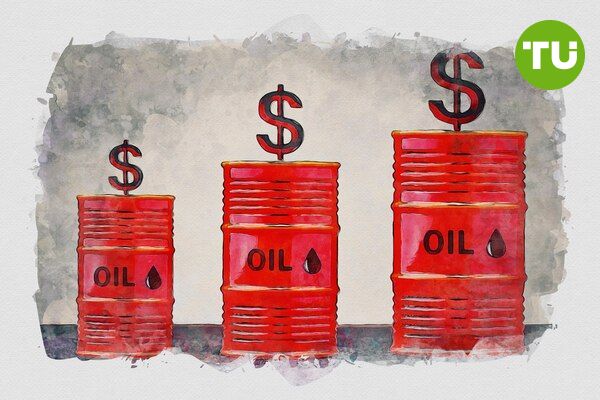WTI crude price falls below $71 amid easing supply concerns and rising U.S. inflation
 WTI crude dips amid Ukraine peace talks
WTI crude dips amid Ukraine peace talks
West Texas Intermediate (WTI) crude oil prices extended losses for the second consecutive day, dropping to $70.6 per barrel in early European trading on Thursday. The decline followed reports of discussions between U.S. President Donald Trump and Russian President Vladimir Putin, where both leaders agreed to begin negotiations aimed at resolving the Ukraine war.
The possibility of a ceasefire raised hopes that supply disruptions from one of the world’s largest oil exporters could ease, driving bearish sentiment in the market.
Brent Crude also weakened, trading at $74.29 per barrel, down from Wednesday’s close of $74.89. Analysts suggest that the potential for diplomatic progress in Ukraine has led to market speculation that Russian oil flows may stabilize, alleviating some global supply concerns.
USOIL price movement (Jan 2025 - Feb 2025) Source: TradingView.
Stronger U.S. inflation reinforces Fed’s hawkish stance
In addition to geopolitical developments, crude prices faced pressure from rising U.S. inflation, which has bolstered expectations that the Federal Reserve (Fed) will maintain its restrictive monetary policy. Higher interest rates tend to slow economic activity, potentially reducing demand in the United States, the world’s largest oil consumer.
Trump’s trade policies also remain in focus, with the White House suggesting that the president could announce a global reciprocal tariff plan before his meeting with Indian Prime Minister Narendra Modi. Concerns over escalating trade barriers and potential inflationary effects add to the market’s uncertainty.
U.S. crude inventories rise sharply, weighing on oil prices
A larger-than-expected increase in U.S. crude stockpiles further dampened oil prices. The Energy Information Administration (EIA) reported a build of 4.07 million barrels for the week ending February 7, surpassing the expected 2.8 million-barrel rise. The data suggests that U.S. oil supply remains strong, adding downward pressure on prices.
Meanwhile, OPEC maintained its 2025 oil demand growth projection at 1.45 million barrels per day (bpd) and expects demand to increase by 1.43 million bpd in 2026. The organization remains optimistic that global demand for air and road travel will sustain oil consumption, despite concerns over potential economic headwinds from trade tensions.
WTI outlook: Key levels to watch
WTI crude is hovering near its pivot point at $70.66, with technical indicators suggesting potential support at this level. A double-bottom pattern around $70.66 suggests the possibility of a rebound if buyers step in. If prices climb above $71.68, momentum could push WTI toward $72.53, confirming a short-term bullish shift.
Conversely, failure to hold above $70.66 could expose crude to further declines toward $69.46, with additional downside risk extending to $68.60. Traders will closely watch for volume confirmation near the pivot level, as sustained buying could shift sentiment in favor of the bulls.
Previously, oil prices fluctuated as U.S. crude inventories surged by 9.04 million barrels, marking the largest build in a year. Rising U.S. inflation reinforced the Fed’s hawkish stance, keeping energy demand uncertain.













































































































































